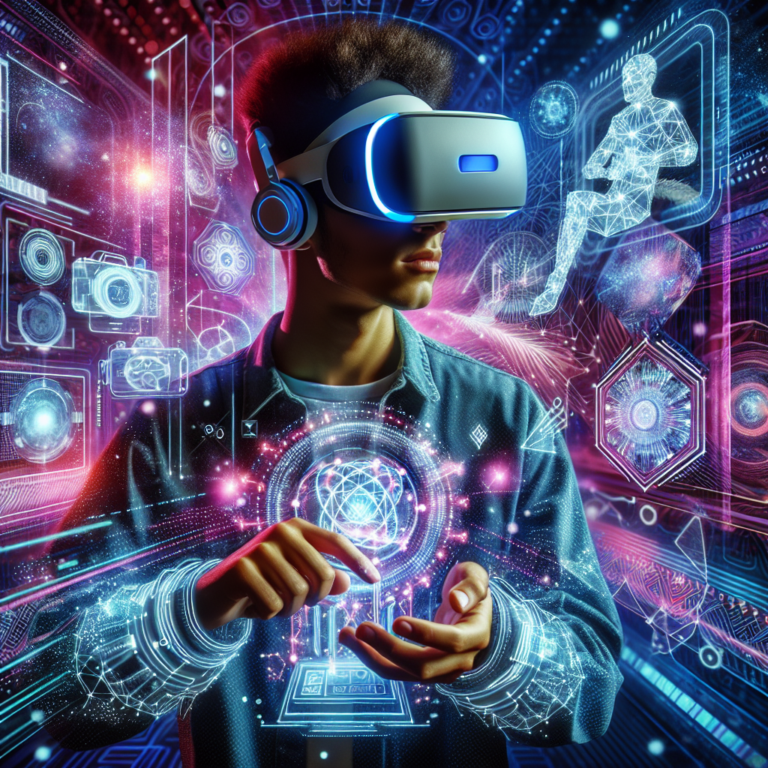The innovative world of virtual reality is continuously evolving, and with it, new challenges arise. One such challenge is the limited access developers have to the cameras on Meta’s Quest VR headsets. However, thanks to the ingenuity of developer Michael Gschwandtner, there’s a clever workaround to unlock this hidden potential! 🚀
Understanding the Camera Limitation
The front-facing cameras on Meta’s Quest VR headsets are primarily designed for safety and tracking purposes. This limitation can be frustrating for developers who aim to create immersive experiences that leverage these cameras effectively. While Meta maintains a cautious approach towards camera access, there is a growing call from the developer community to change this. Notably, John Carmack, Meta’s former consulting CTO, has expressed that granting controlled access could enhance development and usage safely.
Introducing the Workaround
Michael Gschwandtner’s solution cleverly circumvents the restrictions imposed by Meta. By leveraging existing functionalities, he has crafted a method that effectively uses the headset’s capabilities without breaching security guidelines. The implementation utilizes a process to capture the VR headset’s video feed for additional applications.
How It Works
This ingenious workaround leverages the headset’s ability to cast video streams over Wi-Fi, a feature predominantly used for sharing gameplay with other devices. Here’s a breakdown of the steps involved:
- Step 1: The app initiates passthrough video. This feature allows the camera feed to serve as the background in a mixed-reality setting.
- Step 2: The app spawns a Chromium browser, creating an internal environment where it can cast the video feed back to itself.
- Step 3: This video feed, although processed, enables the app to indirectly access what the cameras view.
Features of the Workaround
While the resulting view is not a simple, unadulterated camera feed, it opens a plethora of possibilities. Here are some of the key features:
- Mixed Reality Environment: The passthrough video creates an interactive environment where virtual elements, such as user interfaces, are integrated with real-world visuals.
- Object Detection: The demonstration utilizes MobileNet V2, a machine learning model known for its efficiency in object detection tasks. This model runs directly on the VR headset and can automatically identify a variety of objects without direct camera access.
- On-Device Processing: All processes occur on the device itself, ensuring no external data or insights are transmitted outside of the VR ecosystem.
The Benefits of the Workaround
By unlocking camera access through this method, developers and users alike can benefit in numerous ways:
- Enhanced Development: Developers can test and refine applications more comprehensively, utilizing visual inputs that convey real-world surroundings.
- Improved User Experience: Users engaging with games or applications can enjoy a more immersive and interactive experience as virtual objects blend seamlessly with their environments.
- Encouraging Innovation: By demonstrating this workaround, developers may be inspired to create new applications and experiences that push the boundaries of what’s currently possible in VR.
Potential Applications
The ability to access the VR headset’s camera feed opens a wide array of potential applications for developers. Some of these might include:
- Real-Time Object Interaction: Users can engage with real-world objects and receive instantaneous feedback through their VR interfaces.
- Enhanced Gaming: Games can evolve to be more immersive, with the virtual environment dynamically reacting to the user’s real-world movements and surroundings.
- Educational Tools: Educational applications can incorporate real-world interactions, making learning more engaging through experiential activities.
A Step Toward Future Development
This unique approach crafted by Gschwandtner brings forth a new era in VR development, demonstrating that even within constraints, creativity can flourish. It highlights the importance of continually pushing boundaries in technology while ensuring user safety and privacy are prioritized. With ongoing discussions in the developer community about camera access, the potential for more enhanced and engaging VR experiences is exciting!
In conclusion, the pathway to unlocking camera access on Meta VR headsets, while challenging, has revealed a promising workaround that paves the way for greater creative freedom and user experiences in virtual reality. As this technology continues to advance, we’ll likely see even more innovative solutions emerge.




0 Comments